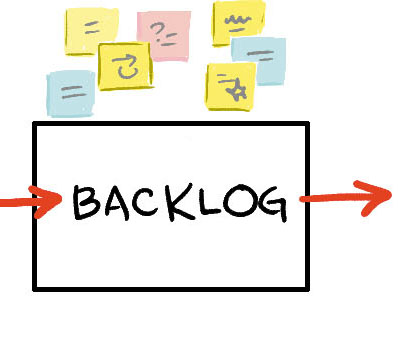 How does a team build their first Agile Marketing backlog? In my experience, there are at least three different approaches:
How does a team build their first Agile Marketing backlog? In my experience, there are at least three different approaches:
Build a Backlog Using Your Current To Do List
Many teams get started with Agile Marketing by building an agile marketing backlog using their current list of marketing to do’s. They convert each one of their to do items (write a blog, build a display ad campaign, etc) into a user story, and this becomes an entry into their agile marketing backlog. For example, let’s say that you need to generate a creative for a display advertising campaign for your theme park. Your To Do item might have been called “Kids fly free promotion”, and here is a sample card that you would create for the marketing backlog. 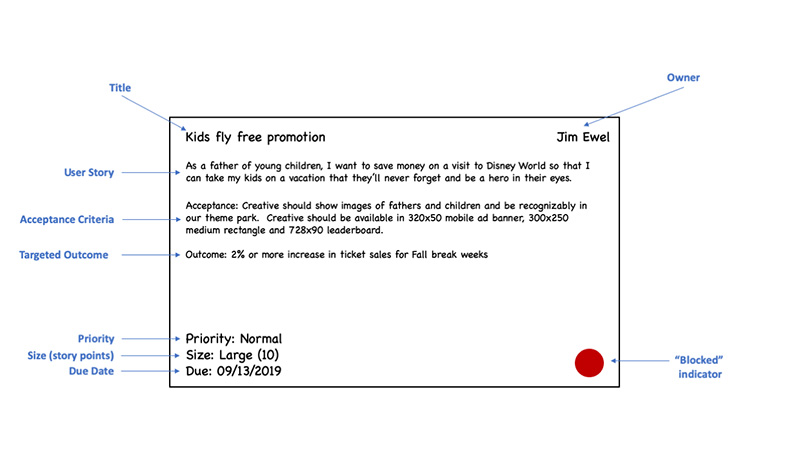 Figure 1 – Sample Marketing Backlog Card
Figure 1 – Sample Marketing Backlog Card
Note that not all of these items will be filled out at the time that you create the card. For example, you might not assign priorities, story points or due dates unitl later and you certainly wouldn’t have the blocked indicator on an item in the marketing backlog. Blocked indicators are only used for items in the active Sprint backlog.
When building an agile marketing backlog from your to do list, leave out housekeeping items like reading email, attending certain meetings, etc. Each entry should either be a deliverable to the customer or a task that is critical to future customer deliverables (customer research, for example).
Teams that create their agile marketing backlog from to do items often organize it around the type of deliverable. For example, blog posts may have different color coding than display advertising campaigns or social media campaigns or videos.
While building your initial marketing backlog from your To Do list is fine, I believe it misses an opportunity to take a more strategic approach to building your marketing backlog. Let’s take a look at two different approaches.
Build a Backlog Using Your Customer Journey
Some teams build their initial agile marketing backlog around either their sales funnel or better yet, their customer journey. Take the example of the customer journey below:
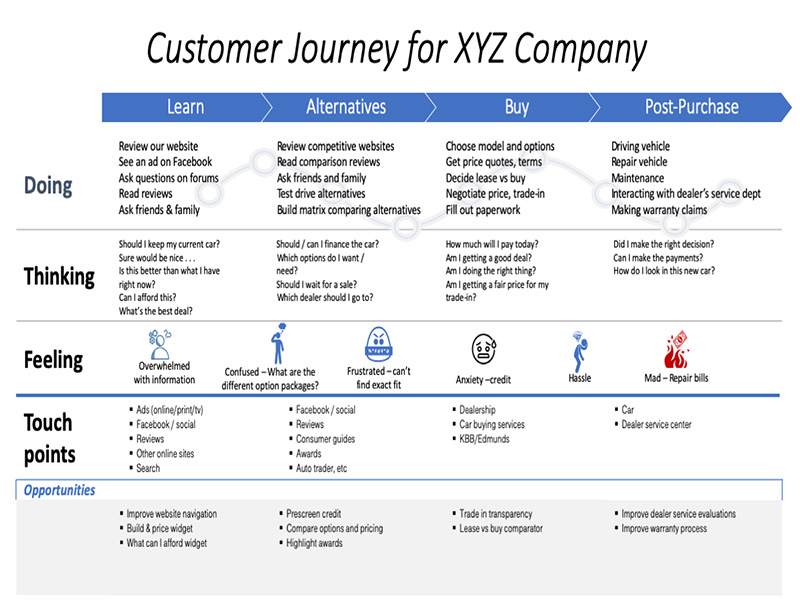 Figure 2 – Sample Customer Journey
Figure 2 – Sample Customer Journey
The team might add user stories and incremental deliverables around each stage of the customer journey, and in particular around the opportunities identified in a thorough audit of the customer experience with your existing customer journey. For this approach to be successful, you do need deep knowledge of your customer experience. This can’t be based on simply marketing “intuition” or general knowledge; instead, it should be based on careful and recent customer research. When done right, this approach to creating an agile marketing backlog can greatly improve the customer experience over time.
The other advantage of this approach is that it allows you to give themes to your Sprints. For example, the theme of your first Sprint might be to improve website navigation. The theme of a subsequent Sprint might be to improve the customer experience during the “alternatives” stage of the customer journey, and so on. This allows the team to have context for their work, and to see large improvements in a particular area of the customer experience with each Sprint.
Teams that use this approach generally organize the agile marketing backlog around the stages in the customer journey, with each stage assigned a different color-coding.
Build a Portfolio Kanban Agile Marketing Backlog
The third approach that some teams use to creating an agile marketing backlog is to build it around a set of company wide strategic themes, which translate into cross-departmental programs, major projects and individual user stories and deliverables. Portfolio Kanban can be used to track this approach, as it lays out visually the key strategies, and the programs, projects and deliverables that are the tactics that deliver on those strategies.
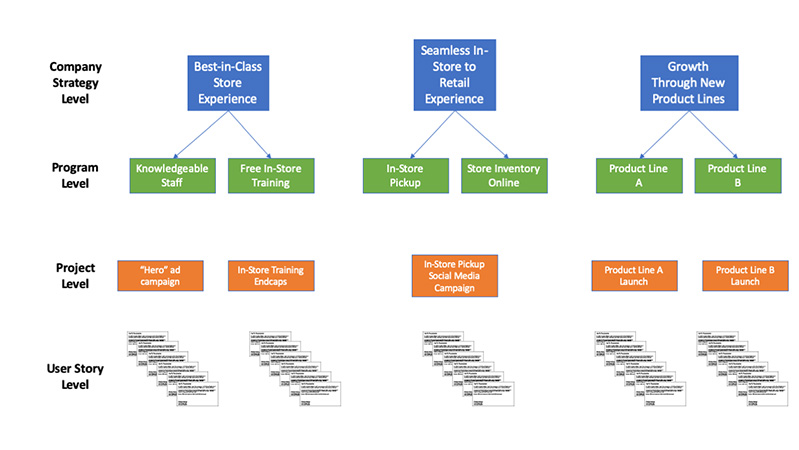 Figure 3 – Sample Portfolio Kanban Board
Figure 3 – Sample Portfolio Kanban Board
Note that this approach requires that your company have well-understood and shared strategies (not as common as you might think) and good cross-departmental cooperation. Typically, the program level items will require multiple departments and multiple projects to execute. The project levels may be strictly marketing projects, usually aligned with projects from other departments as well, or the projects may require some level of inter-departmental cooperation.
This approach ensures alignment of marketing with the key business strategies of the company, and when done right, it can also result in greater inter-departmental cooperation, as each department can see where their contribution fits into the strategic whole.
Teams that use the portfolio kanban approach to creating a marketing backlog generally organize their backlog either around strategic themes or around programs.
What is your approach to generating an agile marketing backlog? If you have a different approach, I’d love to hear about it in the comments.

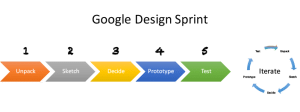


Thanks for this article, Jim!
I will definitely try the approaches you mentioned.
In general, I use epics to identify “micro-projects” based on priorities we have in the department, like an epic called “SEO iteration #3” which contains cards with tasks for different people. The person who plans the epic sets expectations from delivering this bunch of jobs and distributes them among teammates.
For my board with a list of marketing experiments, I use hypotheses as user stories. For example, “As a marketer, I expect this campaign to bring us at least 100 hight quality leads with $n CPA during the next two weeks after the campaign launch.” I try to follow HADI approach here, but now I am thinking of moving “expectations” to acceptance criteria and leave the user story field for putting more details about this or that idea for testing.
Konstantin, thanks for your thoughtful reply. You’ve identified what could be a 4th way of creating a marketing backlog, one oriented around what I (and others) call High Tempo Testing. I generally keep the testing backlog separate from the marketing backlog, but that’s just personal preference. I like the HADI approach. I had not heard of the acronym, although I describe a similar approach in my forthcoming book. Very important to establish a hypothesis, decide how you’re going to test the hypothesis, including the metric to measure, gather the data and document your insights based on the data and other observations.